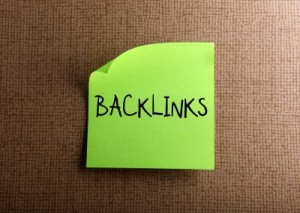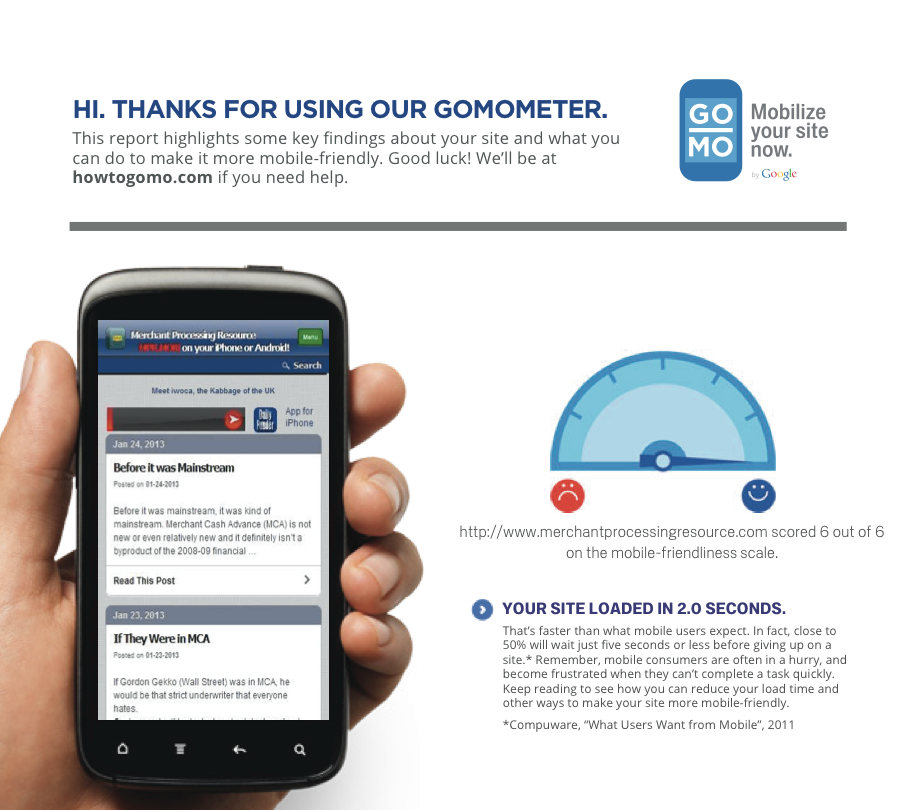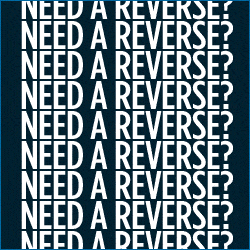Tips
Coming In From the Cold: Connecting With Prospects
January 29, 2013 A small business owner posted a great question on the LinkedIn group “Small Business Networks for Startups and Entrepreneurs” board:
A small business owner posted a great question on the LinkedIn group “Small Business Networks for Startups and Entrepreneurs” board:
Are cold calls effective? Or is it old school? For a small company, what is the best way to promote the business? Any advice will be greatly appreciated.”
The small business owner who posted this question got more than her fair share of advice and opinions regarding the practice of cold calling. And, while most every single comment had a jewel of truth and wisdom when it comes to cold calling – the comments also conflicted with each other. For example:
“Not only is it old school but its intrusive and offensive.”
“Cold calling is old school indeed but it is still one of the most effective ways to reach prospects.”
So – which is it? Offensive or Effective?
Fortunately for the small business owner uncertain whether to pick up the phone there was one comment that simply rocked. Sandra Hoedemaker owner of ChefinDemand.com an online business coaching service specializing in providing services to personal chefs, posted a completely different perspective and approach to cold calling – something she calls “Connect Calling.”
Connecting is Warm – Cold is…well, Cold
Those commenters who identified cold calling as intrusive and offensive make a good point. Today’s consumer not only isn’t interested in hearing uninvited sales pitches, they can (and quite often do) find unscheduled sales calls as a definite intrusion into an already too busy day.
Sandra notes that she does, in fact, “cold call” and also indicates that these calls are always most successful when she is able to connect with the decision maker. So far her comment sounds like your run-of-the-mill cold calling advice. However, Sandra definitely breaks rank because she goes on to say that she “doesn’t sell on the phone.”
OK, if she’s cold calling, but not selling – what exactly IS Sandra doing when she makes those calls?
Sandra knows prospects aren’t interested in “being sold” – but they are interested in learning real ways to solve their problems and get their needs met. Sandra knows that the best way to do that is to establish her credibility as an expert who knows how to solve common problems and meet the special needs of her niche. How does she do that? She offers to provide them with carefully selected free services. This allows her to:
- Build her email list and then connect with prospects freely because they have invited Sandra to contact them.
- Stay connected to her prospects via blogging, teleclasses, and other virtual events (she’s also in the process of putting video presentations in place.)
Outside of the above, connecting with prospects versus cold calling prospects has resulted in Sandra receiving referrals and she’s also garnered invitations to speak as well. Sandra has successfully used Connect Calling as a tactic to connect with prospects in meaningful ways. She’s taken an “old school, annoying” tactic and turned it into a powerful tool to build a community of prospective buyers.
What is most impressive about her approach is the opportunity to begin to establish trust with prospects via Connect Calling. Offering useful, applicable free services and information allows prospects to begin to build a relationship where Sandra becomes a Trusted Advisor who’s got their back versus someone trying to make a sale. Sounds more like networking than cold calling doesn’t it?
And when those prospects pick up a phone to make a call when they find themselves in need of services Sandra charges for, Sandra’s much more likely to be the one who hears it ring.
Sandra’s business serves a unique niche – but Connect Calling can be a valid, productive, and profitable tactic to market your small business no matter what market you serve.
Guest Authored
– Merchant Processing Resource
https://debanked.com
MPR.mobi on iPhone, iPad, and Android
The World is Going Mobile
January 28, 2013We noticed a lot of people sharing and retweeting a link today to a web campaign by Google to create mobile friendly sites. Coincidentally, we’ve been working on “mobile-izing” Merchant Processing Resource for the past couple weeks. We used Google’s GoMo tool to see how we’re doing so far:
2 Seconds and easy to use! Now it’s your turn to GoMo.
Get to our site easily on your phone by typing in MPR.mobi.
A New Approach to Providing Employee Feedback for Small Business Owners
January 22, 2013 Sometimes you just can’t figure out how to deal with employees. Take Rebecca your receptionist. She’s excellent with clients, knows exactly what calls to put through and when to take a message, dresses professionally, and gets along with everyone in the office. She can juggle answering multiple phone lines while greeting multiple clients with ease, and is great in a crisis.
Sometimes you just can’t figure out how to deal with employees. Take Rebecca your receptionist. She’s excellent with clients, knows exactly what calls to put through and when to take a message, dresses professionally, and gets along with everyone in the office. She can juggle answering multiple phone lines while greeting multiple clients with ease, and is great in a crisis.
On the other hand, as far as performing her day-to-day duties, you can’t complain as to accuracy, but let’s just say prioritizing isn’t Rebecca’s strong suit. Take ordering office supplies. Sure, you never have to worry whether or not you’re going to run out of paper clips – but not when Rebecca somehow thinks getting the office supply order into the vendor is more important than the unfinished monthly report sitting on her desk – a report you need for this afternoon’s weekly sales meeting.
You’ve tried giving her positive feedback – you’ve tried giving her negative feedback, both to no avail.
Things aren’t always “either or” as in “either the employee’s behavior merits positive feedback OR the employee’s behavior merits negative feedback.” The world we operate in has a tendency not to be that straightforward – especially when we’re talking about human behavior, even more so when the subject is employee behavior. You may think you’re limited to one or the other of these approaches – but maybe what Rebecca needs isn’t feedback – maybe Rebecca needs feedforward.
Paying it Forward
You might have seen the movie “Pay It Forward” where the premise was that whenever anyone did a good deed for you that you should “pay if forward” to three other people. The idea is put forward by a little boy responding to a school assignment to “Think of an idea that could change the world.”
Now, that’s a pretty tall order – but Dr. Marshall Goldsmith professor of executive education at Dartmouth, prolific author, and well-known management thought leader has an idea that just might change the way small business owners approach managing employees. His idea? Instead of providing employees with feedback he proposes a process he calls feedforward.
Traditionally feedback has been “top down” meaning that a manager (top) provides feedback to an employee (down) regarding their performance. Fortunately the field of management has progressed to acknowledging that, while employees can learn from managers, it is also true that managers can learn from their employees. This has led to better communication between management and employees.
However, Goldsmith points out a fundamental flaw within both approaches: they focus on the past instead of the “infinite opportunities that can happen in the future.” Furthermore, Goldsmith asserts that focusing on the past is “limited and static” whereas focusing on the future can be “expansive and dynamic.”
True Balance
The notion that feedback should be “balanced” usually means the attempt to find some sort of balance between how many times you provide an employee with negative feedback versus how many times you provide an employee with positive feedback. It certainly doesn’t take a Ph.D. in psychology to realize that too much negative feedback will most likely be de-motivating whereas too much positive feedback certainly isn’t going to improve an employee’s performance outside whatever it is they are already doing well.
This is where Goldsmith’s approach shines. Instead of struggling to come up with some impossible ratio between negative and positive feedback, the focus shifts to making observations about the past within the context of positively changing the future.
A Feedforward Conversation
Feedforward is not some inapplicable academic approach to managing employees at your small business. Feedforward is a process versus a “reprimand” or “compliment” you give an employee. Feedforward is a two-way conversation. Let’s take a look at what that conversation might look like with Rebecca the receptionist:
Small Business Owner: “Rebecca, I’d like to take a few moments to discuss this month’s report with you.”
Rebecca: “Sure.” (Rebecca is thinking: I wonder what I did wrong?)
Small Business Owner: “Before we begin, I want you to know that the goal of this conversation is to focus on how we can better use this report in the future to help our sales team. What we’re talking about here is what you can do to help make that happen, as well as how I might be able to help you as we move forward. I’d like to use this week’s report as an example we can learn from. How does that sound to you?
Rebecca: “Great.” (Rebecca is thinking: This is weird, I think my boss wants my help, not just tell me what to do.”)
Small Business Owner: “OK, so tell me what you think about how things went this week.
Rebecca: “I guess it was so sort of hurried. I almost didn’t get it done in time.”
Small Business Owner: “Why do you think that was?”
Rebecca: “Well, I had to get the office supply order out which meant I had to take inventory and that took a while.”
Small Business Owner: “Making sure everyone has the supplies they need is important. How do you think you could make certain that those two responsibilities don’t come into conflict in the future?”
Rebecca: “Hmmm…maybe I should change the day I do supply ordering to Mondays. Sales meetings are always on Fridays. That would give me three complete days to devote to the report. We could even plan to go over the report on Thursday morning together to make sure there aren’t any problems or errors.”
Small Business Owner: “I think that’s an excellent idea. You definitely got that priority straight. I’d like you to take a look at your duties and provide me with a schedule that allows you to meet your priorities. Let’s meet at ten next Tuesday to do that.”
Rebecca: “OK, but…” (Rebecca is thinking: She wants ME to set priorities?) “Well, what if I don’t prioritize things correctly?”
Small Business Owner: “We’ll work together on that. You know, Rebecca, you’re the one doing the work. You know what happens in the front office. I’d like to get your take first before I make any decisions as to how we want to prioritize your duties. Does that make sense?”
Rebecca: “It does, and I’ll be sure to do my best.”
– Guest Authored
Merchant Processing Resource
https://debanked.com
MPR.mobi on iPhone, iPad, and Android
Getting Permission
January 21, 2013 Numbers don’t lie.
Numbers don’t lie.
77% of online consumers surveyed said they want to receive permission-based marketing messages via email. Sounds impressive – but even more impressive when you learn that direct mail came in a distant second with only 9% looking forward to opening their mail box. Interestingly, only 5% preferred text messages. (Source: ExactTarget 2012 Channel Preference Survey)
That’s the good news. After all, email is perhaps the most inexpensive means for small business owners to communicate with consumers. The bad news is – before you can communicate with consumers via email – you’ve got to get their permission (along with their email address.)
Permission-based marketing simply means that you have your customer’s permission to contact them. However, if you’re a small business owner just getting their feet wet it’s likely that 77% of your list isn’t exactly a large number.
Collecting email addresses from customers and clients who have given you permission to contact them is the “Catch 22” and “between a rock and a hard place” of small business email marketing. Obviously purchasing lists of email addresses of consumers who fit the demographic of your customer doesn’t cut it. Emailing someone without their permission to ask for permission to email them just doesn’t make sense – not to mention today’s consumer tends to be totally turned off by businesses that make the attempt. Not too many fans of spam out there.
So, if you don’t have a list – how do you create one?
The Usual Suspects
It would be hard to find anyone with even a smidgen of experience searching the Internet who hasn’t encountered an “opt-in” when visiting a website. An opt-in is nothing more than a form that serves to ask permission to contact the consumer as well as collect their information. Visitors to your businesses’ website can opt-in to receive a variety of marketing messages from you – for example a newsletter, blog posts, or special announcements (such as a sale.) It makes sense to have opt-in opportunities on every page of your website.
Sounds great but, once again, if you’ve got very little traffic on your website, that translates into very little opportunity to build a Mondo email list. If the obvious tactic of including opt-in opportunities on your small business website doesn’t help that much when it comes to building your list – what other tactics can you employ?
Plenty – here are a few:
If you’re a retailer, make it a practice to ask for (and collect) every customer’s opt-in at the point of purchase. The same goes for B2B small business owners. For example, train your receptionist to ask for opt-in when taking calls.
Display an “opt-in sign up” book where customers and visitors to your office will easily find it. Be sure to include information that motivates people to provide you with their permission (i.e. a description of your newsletter, let them know you routinely email discount offers, etc.)
Do it the old fashioned way. It’s likely you’ve got the phone number of most of your customers and clients. Pick up the phone and call to ask for their permission to be contacted via email.
Contact customers and clients who’ve already subscribed. Let them know you’re running a “forwarding contest” and tell them they will be entered into a raffle for each person they forward your email to. Include a link that says something like “Forward to a Friend” (there are email marketing services that can identify which subscribers actually forwarded their email.)
Ask in-person. We are so “virtually” oriented that the obvious can escape us: ask people to opt-in when you meet them in person. This can be at professional and business networking events – even with that person you struck up a conversation with in line at the grocery store.
Partner with a related, non-compete business. Are you a web designer? Partner with a public relations firm and send out each other’s messages.
Include an invitation to opt-in on all printed marketing material. This includes everything from promotional brochures, stationary, and your business card. It also includes printed advertising.
Last, but definitely not least (and perhaps the most obvious) include a link to an opt-in underneath your email signature.
– Guest Authored
Merchant Processing Resource
https://debanked.com
MPR.mobi on iPhone, iPad, and Android
Like a Rolling Stone
January 16, 2013 There’s an old story still making the rounds on the Internet about a woman calling into a computer company extremely frustrated because her new computer wouldn’t start up. The customer service technician, of course, first made sure the machine was plugged in (there’s a good chance that question made his customer even more angry and frustrated, but we all know it had to be asked.) The woman responded that YES, it was plugged in.
There’s an old story still making the rounds on the Internet about a woman calling into a computer company extremely frustrated because her new computer wouldn’t start up. The customer service technician, of course, first made sure the machine was plugged in (there’s a good chance that question made his customer even more angry and frustrated, but we all know it had to be asked.) The woman responded that YES, it was plugged in.
The technician then asked her what happened when she pushed the power button. Power button? The woman told him she wasn’t aware of any power button, but she was certain that the foot peddle was broken. She’s pushed and pushed on it and the computer refused to come on.
She thought the mouse was a foot peddle.
It’s pretty much a certainty that all small business owners and their employees have their own customer complaint stories –and we’re sure thousands and thousands of them are pretty funny. We’re also sure that untold numbers of customer complaint stories small business owners and their employees have aren’t funny at all.
We’ve all had days when we’ve been so used and abused by a customer we wish could just fire them. Which begs the question – is it OK to fire a customer? If so, when?
I Can’t Get No
Wise small business owners know that the customer is always right. However, this doesn’t mean that a customer has a right to be abusive to you or to your employees. On the other hand, things happen – things that customers are justified in making a complaint. Some of those things are going to be the “fault” (even though unintentional) of your business. Some of those things are going to be outside the control of your business. Whether your company is at fault or not isn’t the issue. The issue is making the honest attempt to resolve the complaint to your customer’s satisfaction.
The problem, as the song says, is that there are going to be customers who, no matter how hard you try, “Can’t get no satisfaction.”
Here is the short list of basic ways to respond to complaining customers seeking satisfaction:
Let them vent. Most of the time even the angriest customers just want to be heard. They want to know that you’re taking them, and their complaint, seriously and the way to let them know you are is to allow the customer to vent. It can be frustrating, but don’t break in or interrupt. Instead, let them tell you their whole story. When you do, you’ll be surprised at how many customers “calm themselves down” without your having to say a word.
Help them figure out what they’re complaining about. Many times customers and clients call in and seem to be complaining about a very specific aspect of your product or service (i.e. it didn’t arrive on time, the quality doesn’t meet their expectation) but, after that issue is resolved, are still frustrated and/or angry. The way to respond is by asking clarifying questions that help the both of your sort out what’s really going on. For instance, a client may think they’re complaining about the quality of the product, when what they’re upset about is the fact that the service technician who installed it did not take enough time to explain how to use the product.
Validate the customer’s experience. Right or wrong – what the customer experienced is what they experienced. Attempting to convince someone they really aren’t or shouldn’t be angry or frustrated isn’t productive. And apologizing can backfire. Certainly there are times when a sincere apology for a goof up on the part of your business is warranted. There are also times when doing so can create unrealistic expectations on the part of the customer – expectations that will ultimately lead to the customer complaining again when those unrealistic expectations aren’t met. For example, you might apologize for the technician not taking time to explain the product when they installed it and then discover the technician spent a couple hours doing just that when 15 minutes is the norm.
Use your best judgment when it comes to apologizing, but also understand that more often your customer will be more satisfied that their complaint is being handled when, instead of apologizing, you validate the customer’s feelings. For example, “I know how frustrating new technology can be. Do you have any questions regarding how to use Product A that I can help you with now?”
However, if you’ve listened to your customer, asked clarifying questions to make sure you’ve handled their full complaint, and attempted to sincerely validate their experience and that customer still becomes increasing abusive or unreasonable it can mean it is time to sever the relationship.
This can be done by explaining to the customer that you’re disappointed you haven’t been able to resolve their issue to their satisfaction, but you truly feel this is because their wants/needs aren’t a good match – and then refer them to a reliable competitor. However, you don’t have to take prolonged abuse. If the customer or client uses abusive language or becomes threatening, it is completely reasonable to inform that customer that your company has zero tolerance for that kind of behavior and end the conversation as well as sever the relationship.
– Guest Authored
Merchant Processing Resource
https://debanked.com
MPR.mobi on iPhone, iPad, and Android
The #1 Sales Skill for Small Business Owners
January 10, 2013No matter how well you performed your due diligence before opening the doors at your small business, once you opened them you got a few surprises. And, unless you were in sales before opening your doors, the biggest surprise you got was likely just how difficult it is to “sell.”
Selling is a skill. Now, it’s true that there are “natural born sales people” – but all that means is that they have a talent for selling; they still need to develop their skills. The great thing about skills is that we can learn new skills.
The first skill you need to learn in order to sell successfully is often learning how to change how you think about “selling.” Not sure what we mean by that? If you read the word “zebra” an image of a zebra pops up in your head. Now read the word “salesman” – what image just popped up for you? Most likely not a very positive one.
It might take you a bit of time and effort to get over the prejudices you may have about sales. Unfortunately, as with many things in life, negative experiences we have a tendency to stick to us like glue. To make things even more difficult when it comes to changing attitudes, we also often have a tendency for negative experiences to stick with us much, much longer than positive experiences.
Don’t think that’s true? Here’s a brief exercise to prove our point:
- Write down 10 bad experiences you had with a sales person in less than 3 minutes.
- Write down 10 great experiences you had with a sales person in less than 3 minutes.
We rest our case.
Do You “Hate” Selling?
Let’s face it, if you’ve got a history of “not trusting” sales people it’s going to be pretty tough to feel very good about selling. Successful sales are based on trust and, in order for your customer to trust you, you’ve got to have a strong belief that what you’re doing is of value to your customer. Hard to do if you “hate” sales.
If you hate or are “extremely uncomfortable” about selling those feelings quite likely stem from beliefs you have about the process of selling in general and sales people in particular. For instance:
- Sales people are manipulative.
- Sales people are pushy.
- Sales people lie.
 Right out of the box, it is true that some sales people do/are all of the above. But not most – and certainly the Top 5% are about as far away from manipulative, pushy, and dishonest as you can get. Think about it. You don’t want people to buy from you once – you want to create loyal repeat customers who also refer other loyal repeat customers to your business. Certainly the words “manipulative, pushy, and dishonest” aren’t behaviors that are going to result in creating a loyal customer base. That means that all those bad experiences you had with sales people happened when you were buying from “bad” (under-performing, unprofessional) sales people. While it might have looked like they would do anything to make a sale, it was probably because they were desperate to make a sale because they were so bad at it. Sales people who operate like that and are successful are actually the exception and not the rule. They also frequently aren’t successful for very long periods of time.
Right out of the box, it is true that some sales people do/are all of the above. But not most – and certainly the Top 5% are about as far away from manipulative, pushy, and dishonest as you can get. Think about it. You don’t want people to buy from you once – you want to create loyal repeat customers who also refer other loyal repeat customers to your business. Certainly the words “manipulative, pushy, and dishonest” aren’t behaviors that are going to result in creating a loyal customer base. That means that all those bad experiences you had with sales people happened when you were buying from “bad” (under-performing, unprofessional) sales people. While it might have looked like they would do anything to make a sale, it was probably because they were desperate to make a sale because they were so bad at it. Sales people who operate like that and are successful are actually the exception and not the rule. They also frequently aren’t successful for very long periods of time.
Hopefully you’re feeling a bit relieved to find out that learning how to sell does not mean honing skills related to being manipulative, pushy, and deceitful. Most successful, top-performing sales people are the exact opposite. Instead, sales is about solving your customer’s problems and meeting their needs. It’s about having their back and bringing them value even when they don’t buy from you. Why? Because that is how you create trust – and people like to do business with people they trust.
Believing in what you’re doing isn’t the only sales skill you need to learn – but it is definitely the first thing you need to get under your belt, and in a big way. No matter how many sales books you read or seminars you attend, unless you believe in what you’re doing and that your ability to sell is a value to your customer – you run the risk of becoming that manipulative, pushy, less-than-honest image of a sales person you love to hate.
Guest Authored
– Merchant Processing Resource
https://debanked.com
Avoiding Credit Card Fraud
January 7, 2013 Many small businesses that weren’t able to utilize traditional credit card processing services are delighted to find that there are now applications where they can accept credit card payments using a smart phone. However, before you jump on the bandwagon, it only makes sense to do your due diligence as to how to avoid credit card fraud. Just because you can process that card via your cell phone doesn’t necessarily mean you should. You don’t want to get caught holding the bag (and paying for) products after finding out you’ve been “had.”
Many small businesses that weren’t able to utilize traditional credit card processing services are delighted to find that there are now applications where they can accept credit card payments using a smart phone. However, before you jump on the bandwagon, it only makes sense to do your due diligence as to how to avoid credit card fraud. Just because you can process that card via your cell phone doesn’t necessarily mean you should. You don’t want to get caught holding the bag (and paying for) products after finding out you’ve been “had.”
As a matter-of-fact, not matter what services or devices you use to accept credit cards, as a small business owner you need to institute policies and practices to avoid credit card fraud. Here are some of the basics:
When accepting cards in-person at the point of service.
It is amazing at how just asking one simple question, “Can I see some valid ID?” can make all the difference. Always ask for a valid form of picture identification (such as a driver’s license) before accepting a credit card. If the customer isn’t able to provide ID, then DO NOT process their payment. This means asking for the card and identification BEFORE it is swiped. When you have both the card and identification in hand, check the back of the credit card for the customer’s signature and match that signature with the one on their valid ID. Again, if they haven’t signed their card, or the signatures don’t match, don’t process their payment.
Many small business owners may have an issue instituting the above policies with repeat customers if they have not used the policy previously. Now, this is going to be a decision each individual owner needs to make. You may indeed have long-term customers that deserve your trust, but they may not. At the very least, should you decide to accept their payment without a valid ID and/or their signature is missing on the back of their credit card, let that customer know that this is a “one time pass” and they must be able to provide both next time they make a purchase. You might be hesitant to do so, but letting the customer know that you are pursuing this policy to protect your customers. For example, costs associated with theft (including credit card fraud) must be covered by increases in pricing.
When accepting credit card payments over the phone or online.
The best way to avoid credit card fraud when taking payments over the phone or online is to get all the information you can to identify that the person making the order is, indeed, the owner of that credit card. This means reading off the name exactly as printed on the card. It means not only the full credit card number, but also the 3 digit verification number on the back of the card.
Often a purchaser will want the order shipped to another address. This is why you need to ask for both the billing address and shipping address. It is also why having an address verification feature is critical.
Many credit card processing companies monitor purchasing patterns at your place of business. For example, should there be a sudden increase in the number of credit transactions that can serve as a red flag and you will receive an alert. However, taking steps to avoid theft and fraud (not simply credit card fraud, but also shoplifting, employee fraud, etc.) should always be addressed proactively by small business owners themselves.
Guest Authored
– Merchant Processing Resource
https://debanked.com
Is Google Your Only Web Strategy?
December 31, 2012Every business wants to be found in search. To most, being found means top placement in Google’s search results for keywords or phrases that are most likely to convert into a lead, sale, or customer. That begs the question… how does one get that top placement?
While many are now accusing Google of monopolizing or manipulating the search results to promote pages and products that earn them revenue, they are still unique in the sense that one simply cannot buy top placement in organic rankings. The Google search system was originally designed to rank pages based on both how many other pages linked to a page and how important those linking pages were. It was a relational system called PageRank that theoretically gave little guys a chance of being ranked alongside or even ahead of major corporations.
When it came to being talked about or linked to from other sites (these incoming links are called backlinks), mega corporations with large sums of money had a tremendous advantage. Media outlets seemed to always be linking to them naturally and they could buy linking ads on websites that didn’t. They could even buy backlinks on irrelevant pages just to up the ante. In 2011, Overstock.com was penalized by Google after one such linking scheme was discovered. Overstock was offering discounts to students and faculty that placed a link to their website on a school web page ending with .edu. It was believed that .edu top level domains (TLDs) carried far more weight than .com, .net, and .org. Overstock tried to capitalize on that.
Where a company ranks in the result listings can mean the difference between success and failure. For the mega corporations, millions of dollars in revenue can be gained by being listed 1st as opposed to 4th. The reality is that searchers tend to click on top results more often, ultimately leading to more sales for the companies that rank well.
According to a study conducted by Slingshot SEO, the top search result is clicked 18.2% of the time, whereas the last result (#10 on the page) is selected 1% of the time. These statistics make a few things clear. If you’re not on the first page, you might as well be in outer space. Additionally, a ranking on the first page must be for a search term or phrase that is frequently searched. Sure, we’re happy to be listed 4th for the search phrase “greatest merchant cash advance company in the world,” since it links to our free directory of verified MCA providers, but since no one is using that search phrase, it really doesn’t matter.

A hypothetical business does research and determines that 100 people per month are entering this phrase into the Google search bar: “I want a merchant cash advance this minute.” It looks promising because it shows that the end user is in buying mode. One could make the case that they are more likely to apply for business financing than a user searching for “the history of merchant cash advance.” 100 searches for the initial phrase might seem like an opportunity, but you have to make an effort to achieve a listing for that keyword, at least that’s what Search Engine Optimization (SEO) gurus will tell you.
All Hail the King
Since Google is the omnipotent dictator that determines where every website falls, there is nothing that can 100% guarantee a website will be visible for the terms and phrases a webmaster wants. There is no shortage of tips, methods, and tricks to boost the odds but all of those things require time, money, or both. Neither will get the webmaster far unless the Search Engine Optimizer (SEOer) knows how to modify a website, analyze search phrases, and implement a strategy to increase rankings. If the SEOer isn’t tech savvy, stay away.
The SEOer’s strategy will likely fall into one of two categories, white hat or black hat, but it’s important to note that wearing any kind of hat is technically a violation of Google’s Terms of Use. It’s easy to label an SEOer that places thousands of irrelevant comments with a backlink on blogs all over the Internet as a black hatter. But contrast that technique with a white hatter that does nothing more than write interesting articles and get them published on other websites with a backlink.
The latter may seem innocuous, but both attempt to manipulate Google’s algorithm and can lead to serious ranking devaluation penalties. A penalty can be crippling for a business that depends on acquiring leads or customers online. Worse yet, the webmaster is not tried before a jury of his/her peers before being sentenced to page infinity for all search terms. This is the downside of the playing field Google creates. John Doe business owner can be listed alongside multi-million dollar corporations and can enjoy that visibility to grow into a million dollar business themselves. But if it is Google that brought him into this world, it is Google that can take him out.
 In late April, 2012 Google announced they were cracking down on “blog networks.” This algorithm update became known as Google Penguin and hit the web like a hammer. 3.1% of all english search queries were affected. Penalized webmasters that paid to have self-written articles published on other websites to get the link juice were left wondering how the practice could be a violation. Analogies were used to explain that paying to promote oneself is standard business practice. They likened article marketing to the basic trade of journalism. They argued it was their constitutional right to promote articles without fearing the total loss of business or retribution from Google.
In late April, 2012 Google announced they were cracking down on “blog networks.” This algorithm update became known as Google Penguin and hit the web like a hammer. 3.1% of all english search queries were affected. Penalized webmasters that paid to have self-written articles published on other websites to get the link juice were left wondering how the practice could be a violation. Analogies were used to explain that paying to promote oneself is standard business practice. They likened article marketing to the basic trade of journalism. They argued it was their constitutional right to promote articles without fearing the total loss of business or retribution from Google.
Google’s position though is that it is perfectly okay to link to a friend’s website or to pay to have articles placed elsewhere. They respect that those decisions are not theirs to judge in respect to the global Internet. However, if the intent (or perceived intent!) of these practices is to achieve higher ranking in Google’s search results, then they reserve the right to protect the integrity of their ranking system accordingly. Essentially, anyone can do what they want, but it might affect how things are scored within their private system. So if you don’t care about your valuation in Google, you can use all the linking schemes in the world if you so choose. The problem is that most people do care about their score in Google and many people view Google as the global Internet. Google can argue that they are simply policing their own private system but to millions of web users around the world, they are viewed as policing the Internet.
The Revolution
It’s not their fault. Google’s system was so good and their interface so simple, that millions of people started using it and never went back. They became the Internet. Search engines existed previously but had many flaws. Back then, millions of websites that provided answers to questions or sold solutions for problems went undiscovered to the vast majority of humanity. Google found them, ranked them, and then went on to check them frequently to make sure users were still likely to find what they wanted.
They made the world a better place until the laws of their kingdom began to contradict common sense. For example, it would seem practical for a video game company to buy a banner ad on a video game enthusiast web forum. They could benefit from the targeted traffic and hopefully sell some video games. But at the same time, Google might view this banner link as an attempt to manipulate their algorithm.
 To resolve this dilemma, Google created a tagging system to allow their search crawlers to identify which links were paid for and then direct their algorithm to make sure the buyers did not benefit in search from them. This directive was controversial because it forced webmasters that cared about their rankings to worry about the nature of their outbound links. Could a website selling banner ads hurt both the buyer and the seller at the same time? They sure could. If buying and selling backlinks is forbidden, then both parties have something to worry about. Today, it is important to include the rel=”nofollow” attribute in html coded links that are paid for.
To resolve this dilemma, Google created a tagging system to allow their search crawlers to identify which links were paid for and then direct their algorithm to make sure the buyers did not benefit in search from them. This directive was controversial because it forced webmasters that cared about their rankings to worry about the nature of their outbound links. Could a website selling banner ads hurt both the buyer and the seller at the same time? They sure could. If buying and selling backlinks is forbidden, then both parties have something to worry about. Today, it is important to include the rel=”nofollow” attribute in html coded links that are paid for.
Since the majority of web users use Google in some way, the challenge and effort to achieve better placement has become a billion dollar industry. Prestigious advertising firms claim they can improve search placement using white hat guidelines Google itself created. The fact remains that there is no way to be safe, no matter how prestigious, knowledgeable, expensive, or innocuous the SEOer is. Having a page on a website that discusses a topic that another page on the same website already talks about can be grounds for a penalty. Interlinking your pages too much can be grounds for a penalty, discussing too many broad topics can be grounds for a penalty. Writing with imperfect english can be grounds for a penalty. Mentioning your product or service too many times in an article or throughout your website can be grounds for a penalty. Not using enough visual aids such as images or videos can be grounds for a penalty. Adding new content to the website too frequently can be grounds for a penalty.
Everybody’s Doing it
 Smart webmasters approach the web like their health. Do everything in moderation. It seems like every year there is a study that proves a correlation between a daily household food item with a certain untimely death. We’ve all heard something like this before: “The study determined that people that eat less than 2 carrots a day are more likely to die before the age of 70 than people that eat 2 or more carrots per day.” It’s the kind of fear mongering that causes someone to worry obsessively about meeting the 2 carrot daily minimum only to get hit by a bus as they cross the street three decades before they turn 70. Webmasters can spend their days worried about how Google will view them and ultimately never be found by their potential customers or they can do what everyone else does and work on getting backlinks and add content to their websites.
Smart webmasters approach the web like their health. Do everything in moderation. It seems like every year there is a study that proves a correlation between a daily household food item with a certain untimely death. We’ve all heard something like this before: “The study determined that people that eat less than 2 carrots a day are more likely to die before the age of 70 than people that eat 2 or more carrots per day.” It’s the kind of fear mongering that causes someone to worry obsessively about meeting the 2 carrot daily minimum only to get hit by a bus as they cross the street three decades before they turn 70. Webmasters can spend their days worried about how Google will view them and ultimately never be found by their potential customers or they can do what everyone else does and work on getting backlinks and add content to their websites.
Is a compliant website that is never found by customers better than a website that has a good run, makes a lot of money, but takes the risk of getting penalized in the end? Some believe it is better to have loved and lost than to have never loved at all. Afterall, an online business that has no web visitors is not really a business is it?
 White hatters, the SEOers that wrongly believe they are immune from repercussions argue that their strategies take far longer to create results because they are in it for the long haul. Coincidentally, these long-haul strategies tend to have a high monthly price, do not guarantee results, and cannot predict what changes Google will make in the future. For example, if an SEOer says their slow and steady method will take 6-12 months, the webmaster should understand that the ranking algorithm could change in 5 months. All the work performed could be rendered obsolete in the blink of an eye or worse, devalue the ranking further from where it was originally.
White hatters, the SEOers that wrongly believe they are immune from repercussions argue that their strategies take far longer to create results because they are in it for the long haul. Coincidentally, these long-haul strategies tend to have a high monthly price, do not guarantee results, and cannot predict what changes Google will make in the future. For example, if an SEOer says their slow and steady method will take 6-12 months, the webmaster should understand that the ranking algorithm could change in 5 months. All the work performed could be rendered obsolete in the blink of an eye or worse, devalue the ranking further from where it was originally.
In the quest for a quick fix or even as part of a long-term strategy, SEOers can’t help but notice that websites maintained by news media seem immune to all the rules. They republish countless amounts of duplicate news reports and they buy and sell exposure like its going out of style. In a way, they are a multiplied version of everything Google says not to do. But while they might get tons of traffic from search engines, they are not entirely dependent on them. Big news media has incredible brand name recognition. An individual seeking information about the Fiscal Cliff may simply type “CNN.com” in the browser address bar and bypass Google altogether.
Companies like Reuters, The Wall Street Journal, Fox, and CNN, etc. are highly authoritative and could be categorized as the holy grail of backlinks. If one of the major ranking factors is the importance of the website the link is on, then there is nothing more important than being mentioned by national mainstream news media. The media outlets know the perceived value of their links and are hungry to find new streams of revenue. Thus, an opportunity presented itself to them just as printed newspapers began going the way of the dinosaur. And so they began to peddle link juice.
The age of buying links is not dead and it is now much more difficult for Google to punish the parties involved. Webmasters can pay public relations firms to get a “company press release” published on big news media sites and get the backlink of course. This tactic has been around for years but it has become one of the last great bastions for white hat SEO. Others would argue that social media is the next frontier but for SEOers grinding it out in the trenches, traditional backlinks seem to work better above all else.
Many public relations firms have been warned by Google not to promote the backlinking aspect of their service, but all of them offer some kind of SEO package to target webmasters that are interested in using their service for the purpose of link juice. Searchengineland.com ran a great article that exposed what the press release as SEO tactic revolution has done to the news. (http://searchengineland.com/how-prweb-helps-distribute-crap-into-google-news-sites-140597)

There is now a surge in boring, irrelevant, and oftentimes non-sensical company announcements on big media sites across the Internet. It is a popular SEO method in many fields, making it difficult to find actual industry news amongst the clutter of backlink driven stories.
But if it works, then why stop? That of course implies that it works in the first place. Several days ago, Matt Cutts, the director of Webspam at Google informed inquisitive webmasters that links in these press release articles DON’T COUNT. Helpful SEOers explained to the original poster that most links in press releases have the no-follow attribute added to the links to make sure that they don’t pass juice. Upon our own examination however, we couldn’t find any news media or public relations firm that implements no-follow. It would probably hurt their bottom line if the junk releases they were peddling suddenly didn’t count for anything.
The debate rages on about whether or not the director of Webspam is to be trusted. Is the ranking algorithm as powerful as Google claims it is? Or are they spreading fear and misinformation to make up for their shortcomings? There is a lot of interesting feedback to consider in the comments section of seroundtable’s short article regarding press releases.
In the past, many webmasters have used obvious black hat techniques for favorable placement and gotten burned in the end. Many innocent websites have been caught in the crossfire. Success on the Internet is believed by many to be achieved only by being visible on Google.
The War
Individuals that have never managed a business website in their life have little idea how Google works. They know it will provide them with the answers they’re looking for and rank them in order from best to worst. To everyday users it is nothing short of magic. To an SEOer, being #1 for a search term may mean weeks, months, or years of trial, error, and patience. It requires time, money, or both. It is a tireless quest to become #1 or to die trying. It is the difference between getting 18.2% of visitors for a keyword searched 5,000,000 times a month or 1% of visitors for a keyword searched 100 times a month. It is a battle against not only Google, but against competitors in the same field that are using the same tricks to move up. It is a system that gives little guys a chance to be ranked alongside major corporations. It is way to be found in the sea of a trillion websites. But it is also a dictatorship. Google can sneak into your house in the middle of the night and banish you to page 50 with the accusation that you were buying backlinks. Google can lock the front door of your virtual store to prevent shoppers from getting in. Google can label non-native English speakers as spammmers and silence those that won’t stop writing about the same thing over and over again. This is the challenge with a single company being tasked with policing the entire Internet.
The Perks
 There are alternatives out there like Bing and Yahoo, but the problem is that when people go to those sites, they tend to type Bing or Yahoo into Google just to get there. Such is the habit these days for getting anywhere on the web. In 2008, blogger Marshall Kirkpatrick wrote about this phenomenon. He argued that mainstream users of the Internet do not even know how to navigate it. While tons of responders to the article seem to agree, there are plenty of folks that make a compelling case as to why using a search engine is superior to a browser’s address bar.
There are alternatives out there like Bing and Yahoo, but the problem is that when people go to those sites, they tend to type Bing or Yahoo into Google just to get there. Such is the habit these days for getting anywhere on the web. In 2008, blogger Marshall Kirkpatrick wrote about this phenomenon. He argued that mainstream users of the Internet do not even know how to navigate it. While tons of responders to the article seem to agree, there are plenty of folks that make a compelling case as to why using a search engine is superior to a browser’s address bar.
It isn’t easy typing https://debanked.com perfectly if you’re a fast typer, which might explain why a significant portion of our visitors type this url into Google instead. They want to get to the right place the first time even if they type it in wrong. They might not even be exactly sure what our website is called or how to spell it. It’s not uncommon to see incorrect urls somehow end up in our traffic reports anyway.
- Merchant Processing Esource
- Merchant Processing Source
- Merchant Processing Resources
- Merchant Proccesing Resource (2 Cs or 1s)
- Merchant Processor Resource
The list of mistakes continues, but Google points them in the right direction anyway. If this didn’t happen, we might seriously consider rebranding the site with a much shorter domain name. Unfortunately, in mid-2010 when Merchant Processing Resource started, we didn’t give much thought to the difficulty in remembering a 7-syllable name, nor the likelihood of miskeying a single character in a 34 character address (www.merchantprocessingresource.com). This shove in the right direction is a benefit that an address bar can’t offer.
Not Evil?
The user oriented focus of Google arguably ended once and for all on May 19, 2010, the day they went public. While #6 on the list of Google’s official philosophy is that “You can make money without doing evil,” shareholders may have qualms with #1. It states, “Focus on the the user and all else will follow.” This motto doesn’t scream maximum profit. Besides, being public doesn’t allow Google to focus on the user, but instead tasks them with increasing the value of their stock. Of course they can’t earn a profit if they disregard the users altogether and so they are faced with the challenge of maximizing profit without alienating their users.
Adhering to their own philosophy is tricky, not to mention that many state and national governments believe that Google is manipulating the results to promote their own products. Products? one might ask; What possible products does Google have? Oh you mean you haven’t heard of Maps/Earth, Youtube, Zagat, Google Reviews, Google Plus, Gmail, Blogger, Picasa, Google Wallet, Translate, the Droid OS, driverless cars, the Chrome web browser, or the many other products they control?
Google isn’t content with just controlling search. They want to control the entire Internet experience. Companies like Facebook threaten that monopoly and as such Google has made social networking a top priority to counter them. Not evil?
The Google universe is exhausting. Webmasters must do more than just design great websites to continue enjoying the luxury of being found. Paid links must be marked as no-follow, backlinks on bad websites must be disavowed, private pages must be marked as no-index, similar or duplicate content must be avoided, URLs must be descriptive, title tags should be relevant, HTML should be used over Flash, and moved pages should be redirected if for no other reason than to retain the page value of the original URL.
Is There Life After Dea.err…Google?
As we draw near our conclusion, we argue that Google continues to play a large role in Internet Marketing, but advise that Google is not the Internet, no matter how much you’ve come to believe otherwise. There is LinkedIn, Facebook, Twitter, web forums, blogs, email newsletters, and a zillion other places to promote oneself and be found. Too many people fail to utilize the infinite other opportunities to market themselves online simply because they believe ranking in Google is the only way or because they’ve received a penalty and give up. “Getting ranked” has become an all consuming challenge that blinds webmasters from their true goal of attracting customers. People bought products and services online before Google came around. They might make things easier for the average user that believes search results are a product of magic, but in reality they are just one of many systems to find things. They are an imperfect ecosystem that has become tainted by their motivation for profit. And let’s not forget the millions of white hatters and black hatters that are driving the algorithm wild as they seek better placement for themselves or their clients.
Do we care about Google? Certainly, but only about half of our visitors originate from the search engine. People actually see us mentioned on LinkedIn, Facebook, and actual trade publications. And guess what? Those people visit us, bookmark us, and return. There may come a day when Google decides too many incoming links from Facebook is grounds for a penalty, causing outrage among webmasters, a move that might force many to give the social network up, and even disavow it officially. White hatters could end up having to eat their white hats down the road. The whole system of the Internet will no longer seem to make any sense. Maybe a reality check is okay. Perhaps too many hours and megabytes are wasted on trying to gain favor with Google. So much junk exists out there these days that isn’t even meant to be read or followed, but rather exists for the sole purpose of gaining link juice. If a poorly designed website in China links to a good website in the U.S., should the webmaster have to spend time tracking it down, identifying it, and disavowing it just to appease the king? Does this make any sense?
The next time you spend $300-$500 on a press release with carefully crafted link text, think about whether or not Google is really going to reward you with placement for a search term. Their director of Webspam says you’re not going to score any points, yet you may believe otherwise. Consider how else that money could be spent online outside the context of Google SEO. Are you looking to attract customers or simply gain favor with a king that MIGHT lead to customers? Imagine for a minute that Google, Bing, and Yahoo have banished you from being found forever. Would you close up shop or start to think outside the box?
White hatters that read this may be mumbling to themselves that they need not think this way because they have a surefire strategy that works, something along the lines of “Content is King.” This “Content” revolution involves publishing tons of articles to ones website to give the impression to Google that a website is constantly being updated with helpful information. An SEOer will tell you that Google “wants” this. In reality though, this has created a new phenomenon, the practice of webmasters spamming their own websites. The content may be informative, well written, and on-topic but if it’s being done to please Google instead of making sales or helping visitors, then it’s really nothing more than the black hat trick of the day. “Content is King,” that is until it’s not because 100 million websites are doing the same thing, leading to a vast pile of junk in cyberspace.
People forget that the word ‘marketing’ exists in Internet Marketing. They focus their time and effort on Internet Manipulation. They either have systems to make a quick buck or they slowly march onwards towards a promise that can’t be kept. As we approach 2013, it remains true that Google can’t be ignored, but the rest of the global Internet shouldn’t be either. There are billions of people out there that are looking for what you offer and you need to learn how to reach them. Coincidentally, there are 100 million articles on the web that claim they can teach this very trade. 99 million of them exist for the purpose of getting a backlink. That means the information is questionable at best. Take a marketing course, read a marketing book, or hire a marketing consultant. Go back to the basics if you must. Plan for the day where you won’t exist in search even though your business exists in real life. If the moment comes where Google replaces the search results with only paid advertisements or you get penalized because you told all of your friends to link to your website, you can shrug it off. If you want to be in Internet Marketing for the long haul, stop thinking about search. Google can’t be your only web strategy forever.
– Merchant Processing Resource
https://debanked.com
Find tons of great Matt Cutts memes here































